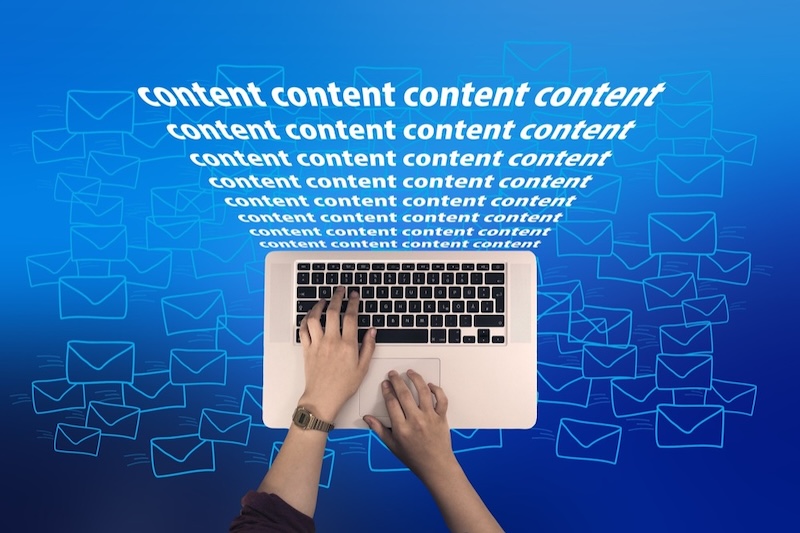Blogging in EverWeb: Feature Updates You Might Have Missed!
Thursday, April 4th, 2024
EverWeb’s Blogging feature was introduced in November 2016 when EverWeb 2.0 debuted. In the intervening eight years, there have been lots of improvements and feature additions in EverWeb’s blogging environment to enjoy. Often many of EverWeb’s blogging updates have been more incremental than blockbuster, so in this post we are going to round up the features and updates that have been introduced since our last update on blogging which came with the introduction of EverWeb 3.5.
Paragraph Styles
One of the highlights of our EverWeb 4.0 release was the introduction of Paragraph Styles to the app. You can apply Paragraph Styles anywhere in EverWeb, to text, within the Styled Text Editor in widgets and also within blog posts! All you need to do is highlight the text that you want to apply the Paragraph Style to in the Blog Post Editor, then click on the new Paragraph Styles button in the Blog Post Editor’s Toolbar – the second icon on the left hand side. Select the Paragraph Style that you would like to use from the dropdown list.
The Paragraph Styles are the same as the ones that you find in the Text Inspector, so if you ever want to modify, add or delete a Paragraph Style, you can do so either from the Text Inspector or by using the Format-> Default Styles… menu option.
SEO Key Words and Short Summary Options!
Although introduced in EverWeb 3.5, this is always worth a mention! You can add SEO Keywords and a Short Summary description to your blog post just by selecting your blog post from the Blog Posts List. Next, click on the Settings Cog then choose the Post Options… menu option. Note that ‘Post Options…’ was renamed from ‘Edit…’ as of EverWeb version 3.9 onwards.
Dark Editor Mode
For computers that support this feature, you can now set EverWeb’s Blog Post Editor to Dark Mode. This feature was introduced in EverWeb version 3.9. To access Dark Editor Mode, click on the Settings Cog on the left hand side underneath the Blog Posts List, then choose Dark Editor from the list of options.
Video (and Audio) Embedding Made Easy!
EverWeb made embedding videos in to a blog post a lot easier in EverWeb 3.9.1. Now all you need to do to embed a video in your post is to add the video file to the Assets list, then secondary, or right, click on the file, then select the ‘Copy File Path’ option. Next, go to the place in your blog post where you want to embed the video. Click on the ‘Insert Video’ button in the Blog Post Editor Toolbar then paste in the File Path link. Click on ‘Insert’ to finish.
The great thing about this option is that it also supports Audio file embedding too!
Clearing Text Formatting
In addition to the introduction of Paragraph Styles in EverWeb 4.0, this release also saw the introduction of the ‘Clear Formatting’ button in the Blog Post Editor’s Toolbar. Simply select the text that you want to clear the formatting from, then click on the Clear Formatting button at the far right of the Blog Post Editor Toolbar.
Importing Blog Posts from Other Sources
You used to import blog posts from WordPress or iWeb through the Settings Cog’s Import… menu option. From EverWeb 3.9.1 onwards you can now use the File-> Import menu for importing from these sources instead. If you are using EverWeb 4.0 or later, you can also import image galleries from WordPress, iWeb or Sandvox.
Blog Post Settings Changes
Most of the updates that come to EverWeb’s blogging environment can be seen in the Blog Post Settings when you are editing a blog post.
- Alt Text for the Blog Post Cover Image: This feature debuted in EverWeb 3.6. We recommend that whenever you have the ability to add ALT Text that you do so. Primarily the function of ALT Text is to help vision impaired people. As such, it is important that the text you enter simply describes what the image is about. Nothing more. The second role of ALT Text is to replace an image that cannot be displayed in a browser window. A third possible role also exists for ALT Text in that it might help boost your SEO if you use it. As SEO rankings involve complex algorithms, no one is certain how much of a role ALT Text plays in SEO, if at all. We strongly recommend that you add ALT Text based on its original intended purpose.
- Add Padding To The Blog Post Cover Image: Another nice feature add allows you to add padding around the Blog Post Cover Image, available from EverWeb 3.8 onwards.
- Blog Post Header and Date Fields Alignment: You can now left, center or right align the Blog Post Header and Blog Post Date fields since EverWeb version 3.8.
Improved Blog Editing Performance
Since our last update on blogging, back when EverWeb 3.5 was introduced, we have made improvements to ensure that typing on large blog posts in the Blog Post Editor is smoother with minimal typing delays. We have also improved the scrolling of the Blog Post Settings making the whole blogging experience snappier!
EverWeb’s blogging experience continues to evolve, but if there is anything that you would like to see come to blogging in the future, or in EverWeb in general, please drop us a line in the Comments Section below!



